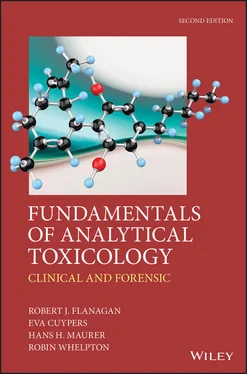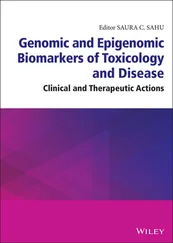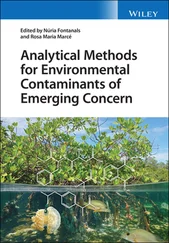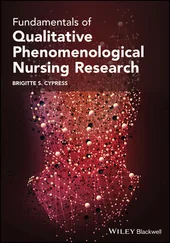21 Nasreddine L, Parent-Massin D. Food contamination by metals and pesticides in the European Union. Should we worry? Toxicol Lett 2002; 127: 29–41.
22 Pasin D, Cawley A, Bidny S, Fu S. Current applications of high-resolution mass spectrometry for the analysis of new psychoactive substances: A critical review. Anal Bioanal Chem 2017; 409: 5821–36.
23 Peters FT, Drummer OH, Musshoff F. Validation of new methods. Forensic Sci Int 2007; 165: 216–24.
24 Pleil JD. Breath biomarkers in toxicology. Arch Toxicol 2016; 90: 2669–82.
25 Posadzki P, Watson L, Ernst E. Contamination and adulteration of herbal medicinal products (HMPs): An overview of systematic reviews. Eur J Clin Pharmacol 2013; 69: 295–307.
26 Smith MP, Bluth MH. Forensic toxicology: An introduction. Clin Lab Med 2016; 36: 753–9.
27 Steyn M, Couchman L, Coombes G, Earle KA, Johnston A, Holt DW. A herbal treatment for type 2 diabetes adulterated with undisclosed drugs. Lancet 2018; 391: 2411.
28 Thompson JP, Watson ID, Thanacoody HK, Morley S, Thomas SH, et al. Guidelines for laboratory analyses for poisoned patients in the United Kingdom. Ann Clin Biochem 2014; 51: 312–25.
29 UNODEC (United Nations Office for Drugs and Crime). Guidelines for the forensic analysis of drugs facilitating sexual assault and other criminal acts. New York: United Nations, 2011 ( https://www.unodc.org/documents/scientific/forensic_analys_of_drugs_facilitating_sexual_assault_and_other_criminal_acts.pdf).
30 Vale JA, Marrs TC, Maynard RL. Novichok: A murderous nerve agent attack in the UK. Clin Toxicol (Phila) 2018; 56: 1093–7.
31 Vuori E, Pelander A, Rasanen I, Juote M, Ojanperä I. A rare case of serial killing by poisoning. Drug Test Anal 2013; 5: 725–9.
32 Wang RY, Caldwell KL, Jones RL. Analytical considerations in the clinical laboratory assessment of metals. J Med Toxicol 2014; 10: 232–9.
33 Wille SMR, Coucke W, De Baere T, Peters FT. Update of standard practices for new method validation in forensic toxicology. Curr Pharm Des 2017; 23: 5442–54.
2 Sample Collection, Transport, and Storage
2.1 Introduction
In analytical toxicology, no matter how complex the equipment and careful the analysis, the results may be rendered worthless if sample collection, transport, and storage have not been performed with the analysis in mind. Thus, it is important to be familiar with the nature and stability of the analyte(s), the nature of the sample matrix, and the circumstances under which the analyses are to be performed. Proper documentation of the history of the sample (origin, mode of collection, transport, storage, chain-of-custody documentation, and the like) is essential.
The analyte concentration in the specimen is generally assumed to be representative of the concentration in the particular fluid or tissue sampled. Anticoagulated whole blood, plasma (the fluid obtained on centrifugation of anticoagulated blood), or serum (the fluid remaining when blood has clotted) are widely used in clinical work. This is because not only is blood relatively easy to collect, but also a quantitative analysis can give useful information as to the magnitude of exposure and hence the severity of poisoning. Excretions (exhaled air, urine) or secretions (saliva, sweat) are often less useful as regards interpretation of quantitative data, but can be useful in qualitative work.
Variations in bioanalytical measurements may be subject-dependent and reflect normal physiological changes, whilst others may reflect sample collection and handling procedures ( Table 2.1). Post-mortem specimens are a special problem because, generally, information on the analyte concentration in blood at the time of death is required. Post-mortem blood concentrations may not accurately reflect peri-mortem blood concentrations for several reasons. Haemolysis is common, for example, whilst haemostasis may lead to changes in the cellular composition of the ‘blood’ being sampled. There is also the possibility of contamination during collection, e.g. with stomach contents, and of leakage of analyte from adjacent tissues into blood. The leakage of intra-cellular potassium into plasma, which begins soon after death, is such an example.
2.2 Clinical samples and sampling
2.2.1 Health and safety
Biological samples may contain infective agents and must be handled with care, especially if originating from substance misusers, and must always be treated as if they are infective. The major common risks are associated with tuberculosis, hepatitis B and C, and human immunodeficiency virus (HIV). Urine is least likely to be infective. It is thought very likely that following solvent extraction or other robust sample preparation procedure, infective agents will be inactivated, except for variant Creutzfeldt-Jakob Disease (CJD), but in homogenous assays such as immunoassays samples may continue to be infective after incubation, even though diluted. Indeed, incubation may increase the titre of the infective agent.
Table 2.1 Types of variables affecting clinical samples
| Variable |
Example(s) |
| (i) Physiological |
| Age |
Markers of bone turnover such as plasma alkaline phosphatase activity are increased in childhood |
| Sex |
Sex hormones |
| Body weight |
Urinary creatinine excretion increases with muscle mass |
| Recent food intake |
Plasma glucose, triglycerides, etc. increase after a normal meal. May delay and/or reduce absorption of some drugs, but increase absorption of others |
| Diet |
Malnutrition or fasting will reduce serum albumin, urea, and phosphate, amongst other parameters |
| Circadian variation |
Some analytes (e.g. cortisol, iron) show diurnal changes in plasma concentration |
| Menstrual cycle |
Plasma concentrations of luteinizing hormone, follicle stimulating hormone, oestradiol, and progesterone vary with the cycle |
| Seasonal |
Vitamin D metabolites higher in summer |
| Pregnancy |
Plasma concentrations of human chorionic gonadotropin, oestradiol, and other biochemicals vary throughout pregnancy |
| Psychological changes |
Venepuncture or hospitalization may increase plasma concentrations of stress-related compounds such as catecholamines, cortisol, and prolactin |
| Physiological changes |
Posture may affect measurements such as plasma aldosterone and albumin. Exercise can change the blood concentrations of compounds such as lactate |
| Drugs |
Drug treatment may alter concentrations of some plasma constituents even in apparently healthy subjects (e.g. trimethoprim increases serum creatinine) |
| (ii) Sample/analyte variations |
| Incorrect specimen |
Value differences between plasma and serum, venous and arterial blood, random and 24 h urine samples (e.g. potassium is on average higher in serum than in plasma) |
| Incorrect collection |
Contamination with ethanol as a skin disinfectant prior to venepuncture may invalidate ethanol assay; use of 2-propanol or other alcohols may also invalidate ethanol assay if used as an internal standard |
| Incorrect sample tube |
The absence of an appropriate enzyme inhibitor may allow continued enzyme action such as catabolism of glucose or neuropeptides. Failure to acidify urine will decrease urinary catecholamines. Collection into EDTA will decrease plasma calcium. Use of Li heparin tube will invalidate plasma Li assay |
| Haemolysis |
Red cell lysis may lead to changes in plasma constituents, particularly potassium, phosphate, and some enzymes, and may interfere with the analytical method |
| Cellular contamination |
The presence of platelets following incorrect centrifugation will apparently raise plasma serotonin |
| Incorrect/excessive storage |
Some compounds may oxidize even when frozen [e.g. formation of adrenochrome from 5-hydroxyindoleacetic acid (5-HIAA)], or be subject to bacterial degradation (e.g. amino acids in acidified urine). Loss of water when frozen (freeze-drying effect), but may attract water if tube open when contents thawed |
| Collection during an infusion |
Collection near to an infusion site or using a needle used to give an infusion will give misleading concentrations of the compound being infused, or dilute other blood constituents |
| Drug treatment |
Other drugs or metabolites may interfere in the assay |
Staff in regular contact with potentially infective materials must be properly trained in the safe handling and disposal of biological samples. Such staff should be vaccinated against hepatitis B, polio, tuberculosis, and tetanus, and possibly other diseases in specific countries. Sample handling should be performed with due attention to preventing droplets splashing into the eyes and minimizing aerosol formation (wear eye protection, perform mixing and other procedures in a microbiological safety cabinet, always use either sealable centrifuge tubes or a centrifuge with sealable rotors). Screw-capped sample tubes are preferable to those with push in stoppers because there is less risk of aerosol formation when opening the tube.
Читать дальше












